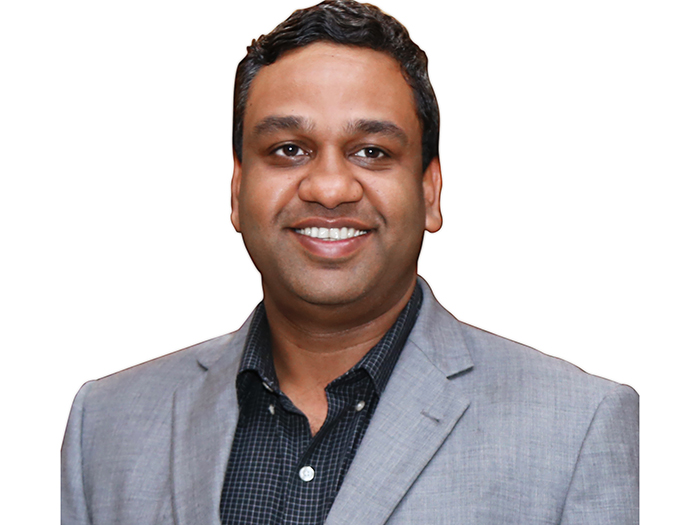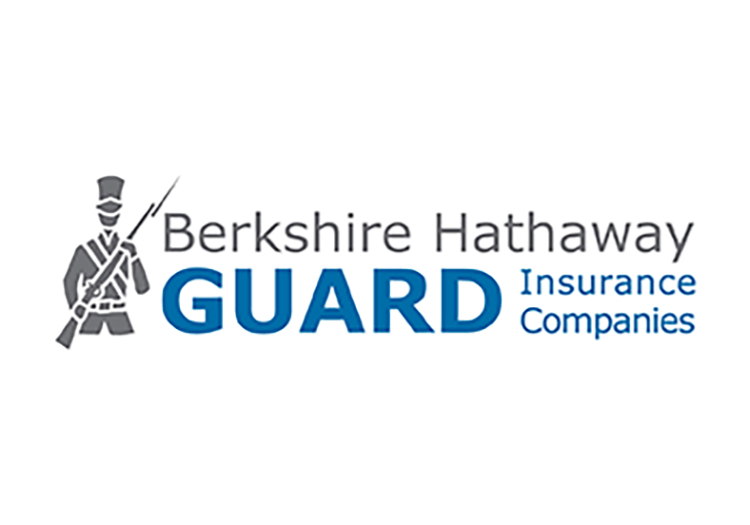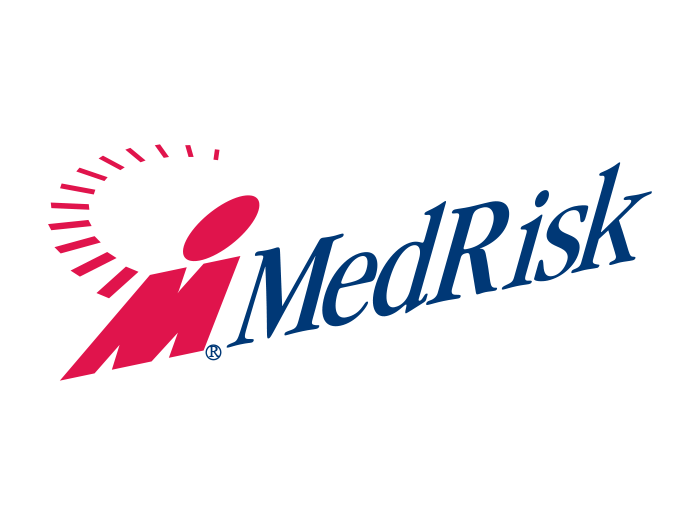9 Questions for Xceedance CEO Arun Balakrishnan

Earlier this year, Risk & Insurance® caught up with Arun Balakrishnan, the CEO of Xceedance, to get his views on market opportunities and the ways in which the insurance sector is utilizing technology.
What follows is a record of that discussion, edited for length and clarity.
Risk & Insurance: What do you see as some of your more appealing business opportunities in the next year or so?
Arun Balakrishnan: As unfortunate as the pandemic has been the world over, I think from a business point of view, it has accelerated a lot of digital transformation initiatives.
Companies are thinking about upgrading their technology infrastructure to be able to work from anywhere and relying more on digital.
This is something that got accelerated as an agenda for all insurance companies, and the good downstream effect of that is they’re looking at partners who can help them on this journey.
So, it’s led to a lot of opportunities for us.
The last two years have been high-growth years for us. And that wave is continuing. That’s one area we are looking forward to a lot from a market opportunity point of view.
Internally speaking, we started our TPA last year and launched with a very good anchor client. It’s scaling up fast, so we see that really going up a lot too, especially in the claims TPA world. If you look, there’s some big companies in that space, and then there are thousands of small ones. We aspire to be something there.
Third, I think the landscape of new investment opportunities is quite interesting.
We’ve never seen as much capital as that which is flowing into the insurance business, especially at a startup stage. This should present some exciting opportunities for us not just as a partner but also as an investor.
We’ve made some investments in the past, so hopefully that creates some good return-on-capital opportunities.
R&I: The TPA comment is intriguing. When you look at that space, what’s your differentiator?
AB: First and primary, it will be with the use of technology and data. Second will be leveraging a global resourcing model.
If we can create, from a technology front, the right kind of systems, the platforms, being able to assimilate into data sources that help augment the efforts of human talent around claims — those are all things that will be par for the course down the road.
Today it seems like a novelty, but we have the opportunity to create that and build that into our ecosystem.
Along with that is a global resourcing model that has the potential to optimize the loss-adjusting expenses.
Now, with the acceptance of remote working, that could happen in Poland. It could happen in Latin America. It could happen in India. So, if we combine the right level of field expertise with an efficient claims workflow using a desk adjusting system, in conjunction with technology and data service, that’s really the holy grail and what we are chasing.
R&I: Where do you see your biggest challenges? What things do you think you have to get right in the next year or so?
AB: When we went suddenly into 100% remote work, we had never done that. We had never even been 30% remote or 20% remote.
It was a huge change, and we navigated that well. We realized there was no effect on our productivity. Productivity went up.
People are doing well and are happy about it. These two years’ experience has told us that any business-as-usual activities go very well. When there are tasks to be done, repeated process, established processes can be scaled.
Anything new that has to be started from ground up, the huddling up of everybody, setting up — that takes much longer. So our conclusion as an organization is that this is not right, 100% work-from-home; neither is 100% work-from-office. It is a hybrid that has to be a combination of the two.
But we are into this inertia of two years where people are working from home. Now, getting them to move in this direction, even if it’s hybrid, is a change. That is something we have our eyes currently laser-focused on, because you always have that group of people who are like, “That company announced you can do a hundred percent work-from-home, why can’t we?”
These softer aspects, the way we went to work-from-home, it was handled well. I think coming back also has to be handled in a more sensitive and appropriate way, and that’s what our eyes are really on for this year, at least, from priority perspective.
R&I: What innovations or trends do you see shaping the insurance industry right now?
AB: Technology is just an enabler. At the end of the day, it won’t change the insurance business; although, it will help.
I think the biggest thing that will hopefully changes the business or evolves it in the right direction is that we have an abundance of data like we have never had before. The typical approach, which nine out of ten people are taking, is, “Hey, we did claims in this manner, we did underwriting in this manner. We asked 20 questions. How can we automate and find responses to these 20 questions given that there is so much data available?”
But nobody’s fundamentally asking, “Why don’t we change these 20 questions?” Because these questions were designed 40 or 50 years ago in a different landscape.
Why do you need to know someone’s age at all? If there was a 21-year-old who hated driving, you could reasonably come to the conclusion that he’s not going to drive much; he’s a good risk. Just because he’s 21 doesn’t mean he’s a bad risk.
I think that’s what the focus should be, “How can we get technology to answer our questions from this data? Who is looking at the questions? Can we ask a different set of questions?”
I feel the organizations that are willing to test the boundaries of the underwriting process or the claims process by coming up with a different approach altogether — “Hey, let’s make this a clean slate. This is what we have. What are we doing?” — I think there are huge opportunities there, and organizations are actively thinking about that change too.
In my opinion, technology will enable all of that.
R&I: Is there also a social equity piece? If the questions being asked were created 40-plus years ago, they don’t really apply to the modern populace very well.
AB: They don’t necessarily do that. Let’s take life insurance. You bought your term policy, you were underwritten, and you bought a 30-year policy. You’ve never been underwritten after that.
I mean, your lifestyle habits, everything changed very drastically over time. It was not possible to physically do that back then.
Today, it’s different.
But while I’m sharing this, I’m cautious always about these comments, because I have a very different view on how we are consuming the data, too. Which, frankly, I think in all this, you shouldn’t get too excited and ignore the fact that data is private.
I think that’s the moral balance the industry and the regulators need to ensure, because it can so easily transcend the boundaries of privacy of data, biases about individuals, their racial profiles and everything, which is so against the concept of insurance.
A machine can build a bias without us knowing it.
If you feed it enough data, you can tell it to ignore racial profiles, but you never know how the machine does it.
While I think there is an opportunity landscape available in which the insurance industry can really evolve and change, we also need to do it in a thoughtful framework lest we transcend the boundaries of data privacy and how that actually gets built in.
That’s why it’s a bit of a caution. I think the regulators could play a very important role there.
R&I: Could you give us some examples in a relationship you’ve got with a client, where you’re really getting some traction?
AB: One of the things we work with clients on, and that happens a lot, is underwriting referrals.
They could come from agents, they could come from brokers, they could come from websites, but certain cases are referred to the underwriter for approval.
With one of our clients, suddenly the bottleneck was becoming the number of referrals coming in, because they didn’t have enough underwriting staff. So we asked the underwriting teams, “Okay, what are you doing when you get these referrals? What’s exactly happening?”
We got the response around, “You get the sense of it. You feel it when you get it. You can smell it.”
Basically, it’s not being able to quantify exactly what you’re doing.
So we said, “Okay, you know what? Let’s look at data.” We took their own cold data and all the referrals coming in. We saw that 70 to 80% fit within a narrow band of 10% higher or lower.
Most of the cases fall in this bucket, and it’s very defined steps. They’re seeing this thing, so they add five points. And it’s amazing. We like to deal in increments of five. I think it’s because we can multiply with five very easily. But there are cases where insights really come into mind.
That portion of the 70% can easily be built into a self-learning algorithm. Every time you make that change, it goes back into the system and the rating algorithm so that the next time a referral comes in, it can be managed in that fashion.
So suddenly the number of referrals starts coming down, the underwriter’s able to respond faster, the agent is happier, so many things happen.
Here is a combination of using technology, using data science, using underwriting expertise at the end of it, and working with actuaries. That’s a good example of how we help clients in these ways.
Fundamentally, as an organization at scale are trying to get the right people to focus on the right elements of the job.
You have a seasoned underwriter who knows trucking counts very well. Eighty percent of the time he’s moving Excel files from one place to the other or putting in a basic rating, which anybody can do for him as a junior underwriter.
So,it’s providing them the ability to do five instead of two; that’s essentially it in a nutshell. And different parts of the business, being claims, technology, all kind of take the same mentality and methodology. We look at ourselves as enablers of carriers and insurers and agencies, brokers. It’s that underlying philosophy in various aspects of our business.
R&I: When it’s going right, when you’ve shed the light that you’ve just talked about for an organization, what kind of response do you get?
AB: The relationships starts with a healthy skepticism, and they usually like to do things the way they’ve been doing it themselves.
Once they get to a point, they say, “Okay, hey, it’s making sense.”
They get comfortable and it moves to the stage of, “It’s helping me. It’s doing a lot more of the heavy lifting for me.”
And when it gets to the point where they say, “Okay, I’m still able to add on top of it because it cannot do everything,” that’s when everything comes together and they become great ambassadors.
That’s the evolution we see.
One of the challenges the insurance industry has today is that the average age of executives and professionals and managers is increasing, which means we are not attracting young talent.
So especially people who have done business in a very different way, they will take the level of some of these with healthy skepticism involved.
The goal here is to win them over by demonstrating success and showing how it makes them better. The combination of human expertise with technology and automation is what is going to drive us to be more efficient.
R&I: One topic you hear a lot about is legacy technology and the challenge of integrating it into new systems or acquired systems. How are you seeing insurers making this evolution?
AB: Fundamentally with any technology systems in an organization, there is an infra layer — the technology infrastructure layer — including your servers and all the right storage, your platform, security, everything. That’s under your infra layer.
Then there is your data layer, wherein all your data is stored, how it is stored, where it is stored, everything.
And then there is an application layer. Basically, which kind of applications you build on top of this, how they interact, everything with various parts of the organization to do the business.
Legacy tech was always about all three in one. They were all bundled together.
One of the biggest challenges that happened over the last decade, or two decades in particular, is companies that tried to modernize their legacy tech, wanted to go into this all three-in-one structure with their evolution.
It took an insane amount of time, insane amount of money. And that whole approach is for other challenges, because you’re suddenly trying to migrate to something that will probably get irrelevant very soon.
Now, if you break it up, what has happened since is at least companies have gotten enough comfort about separating out the infra layer.
There was a phase where people said, fearing security issues, “How can we leave it on the cloud?” Then they gradually understood that the cloud services probably do a better job than they do managing their own service. So now the cloud is very comfortable for people. People are fine with hosting in an Azure, AWS and everything. That infra layer is gone.
Now, the core to an insurance organization is this data layer.
That’s what they need to own. That’s what they need to migrate to platforms that can talk to any level of applications on top of it, whether they’re built internally, whether they’re built externally, whether there are disparities.
So the focus of migrating legacy tech has to be migrating your data, getting your data into a platform, which is easily consumable internally and externally. Forget about the application layer for right now.
Once this is done, then you take a call around, “Okay, how much of the legacy application needs to be made? How much of that legacy application can we give control over to the agents or the broker, the customer?” All of this can be looked with a fresh set of eyes.
That scope of work is very different, and that scope of work and how you think about transitioning your platform is very different. There are organizations that say they do it, but they’re not entirely doing that.
My only advice and suggestion, always to anybody who’s going through this, is don’t talk about moving legacy tech, because as executives, for us, the application is what we see.
“That’s what we need to modernize.”
No, we don’t. We need to be able to access legacy data. That’s what we are talking about. It could be an entirely new application, it could be the same application. It doesn’t matter. The focus needs to be in migrating data and getting that to a place.
Legacy modernization then will be a lot faster, and if they’re more comfortable even splitting up the application layer into external versus internal, it will be a lot better, faster, something which is more future-proof, I would say.
R&I: You can’t talk for too long about insurance without mentioning the talent gap. What are your views on this issue?
AB: There’s one context currently about attracting talent to the insurance industry — the pandemic. The ironic thing I always found is you ask some of the young professionals, “What do you want to do? What do you think about insurance?”
“No, it’s boring. It’s not fun.”
“Well, what do you want to do?”
“I want to get into data science or technology.”
There is something wrong there, because there is no industry with as much data science and technology as insurance.
Maybe I’m not being corporate in my lingo, but we are the “Original Gangster,” in my opinion. As an industry, we are the ones that have looked at data. Insurance is built on the back of data.
There’s a big branding problem. I mean, we have not branded the industry as what we exactly do and the landscape of opportunities.
That’s not just on us. I mean, the industry needs to think about it. Industry bodies, The Institutes, the Society of Actuaries, everybody needs to think about how we are branding and positioning an insurance career choice.
Flexibility is going to be one of the major job requirements any organization will need to provide for people. I think that’s the one lesson we can take [from the pandemic]; the flexibility to be able to work and be efficient from anywhere. Or rather than work-from-home, it being that your office can be anywhere.
The definition of team building, how teams group, the culture around that — I think those are going to be the ways wherein organizations will be able to retain teammates, because this is one of the times when they have most choices. &










